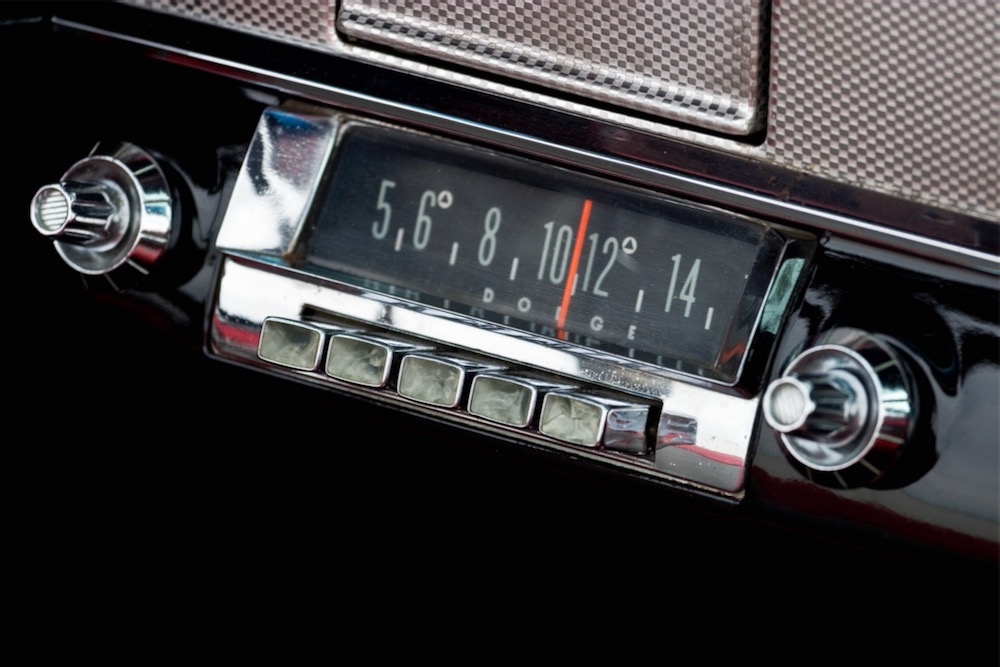I’ve certainly lived in enough places where the FM options on your car radio all fade away before arrival. So even if it’s not my first choice in the car or anywhere, if you’re worried about the potential disappearance of AM radio service, you won’t need to work hard to convince me.
My own personal attachment to AM radio only extends to where any better option begins. It can be difficult to listen to AM radio without feeling as though you’re being yelled at. That can’t be helped, I know. At its frequency, voices and music have to overcome a lot of interference to make it through the air to your ear, and anyone who’s good at it adjusts their tones accordingly. That’s why the late Ronnie Spector belting out the line “Be my little baby” in 1963 hits much differently, by necessity, than when she sang the same line in someone else’s song in 1986.
It wasn’t just a problem for the Ronettes, of course. During my own brief spell reading AM radio news, I’d take my voice almost to the point of caricature, and in your AM speaker I suppose I sounded (more or less) normal — but even so, forcing out that much air just to speak can make even the least urgent news sound like a late-breaking bulletin.
Read Also

Gentle treatments for pain in the neck
Heading toward year-end, people unknowingly tense up against the cold and busyness, causing neck pain that can often be treated with appropriate support and gentle mobility, athletic therapist Kathlyn Hossack says.
So, no: not everyone on AM radio is necessarily yelling at you. At the same time, though, it shouldn’t be surprising that people predisposed to yelling can find popularity nowadays on the AM dial. If that isn’t what Marshall McLuhan meant when he said “The medium is the message,” it should be.
We say all this here today in a farm paper because of the recent flap over AM radio’s continued existence in vehicles, if not everywhere. Readers of our web site may recall last year when automakers Mazda, Volkswagen and Tesla had pulled AM radio from their electric vehicle lines and Ford said it would follow suit in vehicles made from 2024 onward. (Ford threw that plan in reverse very shortly afterward.)
The motive for ditching AM capability in new vehicles is mainly technical, as electric vehicles’ drivetrains can interfere with the AM signal. It’s possible to shield the AM receiver, but doing so is a lot of work just to maintain customers’ access to a service fewer and fewer of them actually use — so it just makes sense not to bother, right?
Wrong, say AM radio’s defenders in rural and farm groups, broadcasting and politics. Sure enough, just a few weeks ago, the U.S. House of Representatives’ energy and commerce committee voted to send a bill mandating AM receivers in new vehicles back to the full House for a vote.
The bill’s supporters say that’s an important step toward getting that bill into law — and let’s face it, that makes it the law up here in Canada as well. The U.S. legislation sets up a Department of Transportation rule requiring that technology to receive AM signals be installed as standard equipment in new vehicles, both domestic and imported — on pain of fines for non-compliance.
Now, you don’t have to search very far online to find people yelling that the U.S. AM Radio for Every Vehicle Act is backward — that it chains all of us up to near-obsolete technology, and compels consumers to eat the expense of keeping it. In a lot of other cases, I’d probably line up with those who say it’s time to let old things die — but not this time.
Both here and in the U.S., over-the-air broadcasting is regulated as a public service, carried out on frequencies deemed public property. Of course there’s no guarantee that any essential broadcasts, such as emergency alerts, will necessarily be heard by Canadians who don’t keep AM or FM radios, televisions or smartphones within reach and turned on at all times — but all of the public, I think, still deserves a fighting chance to hear them. And many farmers will tell you that without FM or local TV or reliable cell signals within reach, AM is the best, or only, option around.
Here in the world’s second-biggest country by area, with the low population density that entails, all Canadians — even more so than our southern neighbours — need the option of a wide-spanning longer-range broadcast source, as lo-fi as it may be.
On top of that — as many farmers will also tell you — when a very small segment of the population is in dire need of a major technological advancement in a hurry, a viable alternative won’t emerge as quickly as it would for the mass market.
Any moves that deliberately make the status quo less viable in the meantime, though, will just produce a lot of needless yelling.
As always, feel free to drop me a line with your thoughts on the matter.
















